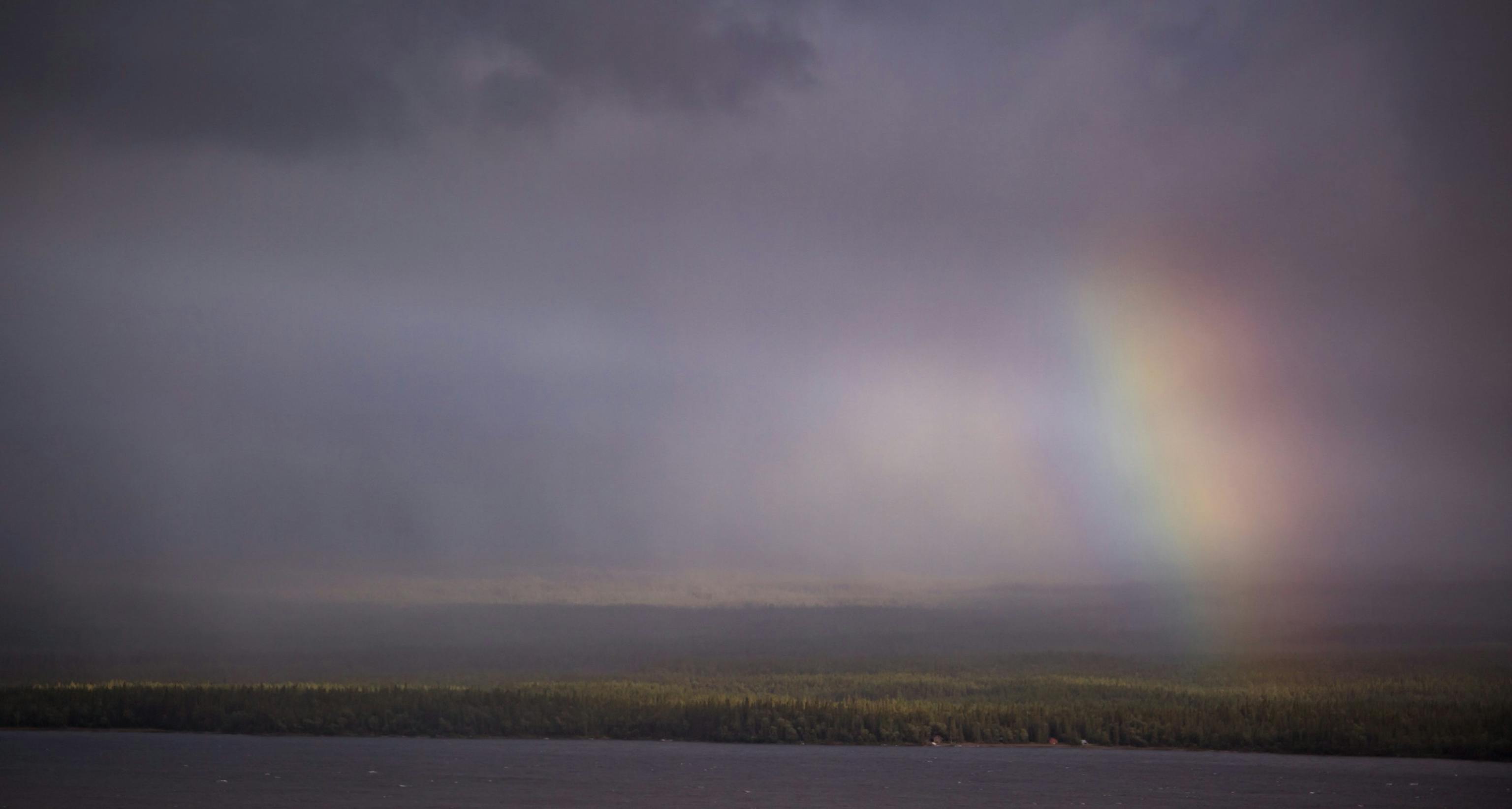
A Trail Odyssey,
A Swedish Glossary
Words and Photos by Phil Gale

When Phil Gale spent the summer in Sweden, he discovered a unique trail running scene, with its own vernacular, tailored to the psychogeography of the people, place, and pace.
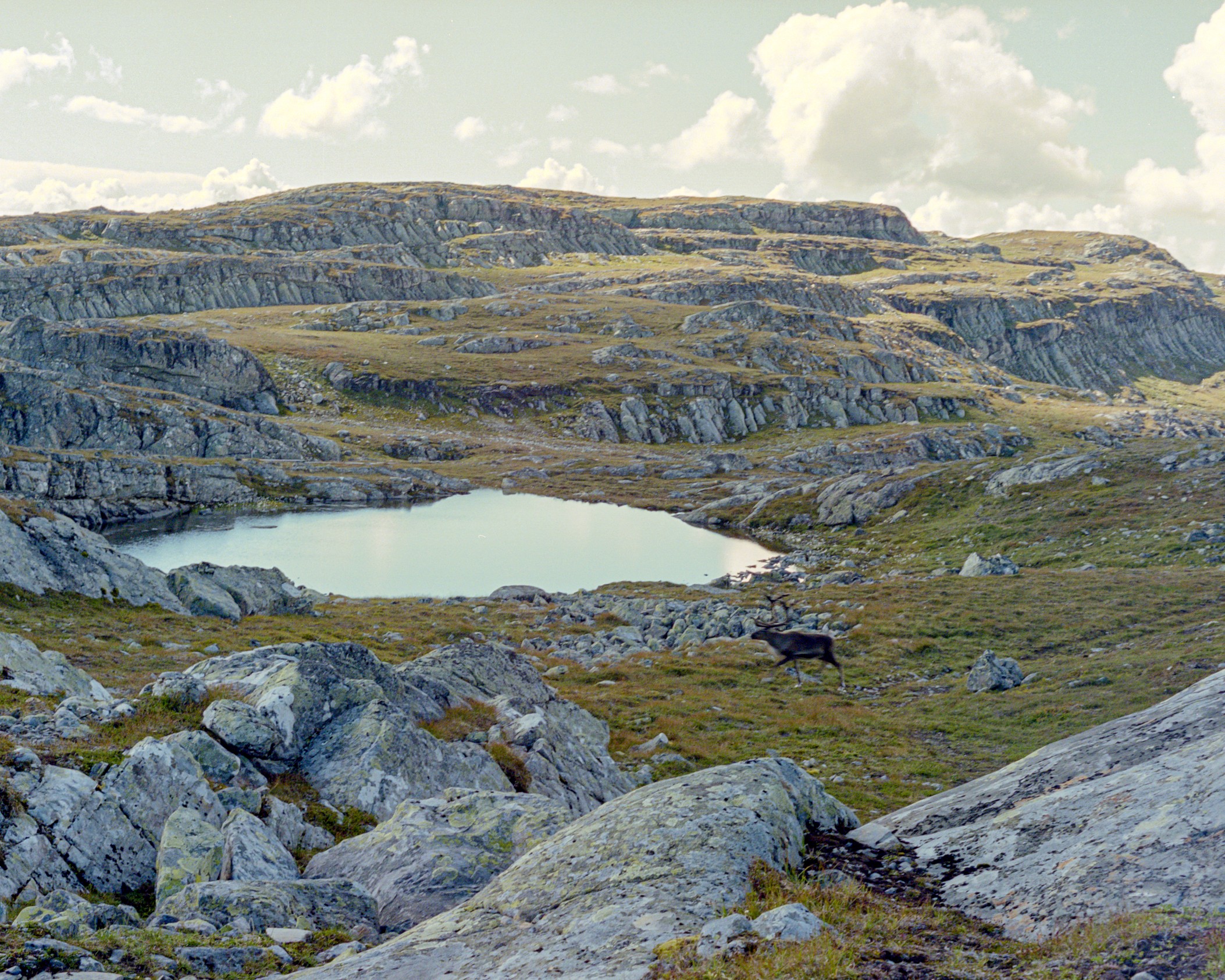

Löpning [lọ̈:pniŋ] – Technical trails warrant a short stride. Eyes fixed, following the line through the vegetation. Narrow; obstacles; constant twists and turns; there’s a reliance on your peripheral vision. No consistency, no repetition, no monotony. Considered foot placement requires continual adjustment to your cadence and stride; your mind whirrs with a non-stop need to assess the terrain. Where can you place your foot? What angle will it be? Does it require a harder push to reach it? This process moves into your subconscious only once you are at ease running on these strange Swedish trails. Reinforcement comes from the split-second contact time you have with the ground, before the next stride is made. Roots, rocks, water, mud or dirt, each surface gives you a different feel under foot; the variety of feedback fills your senses as your feet glide over the terrain.
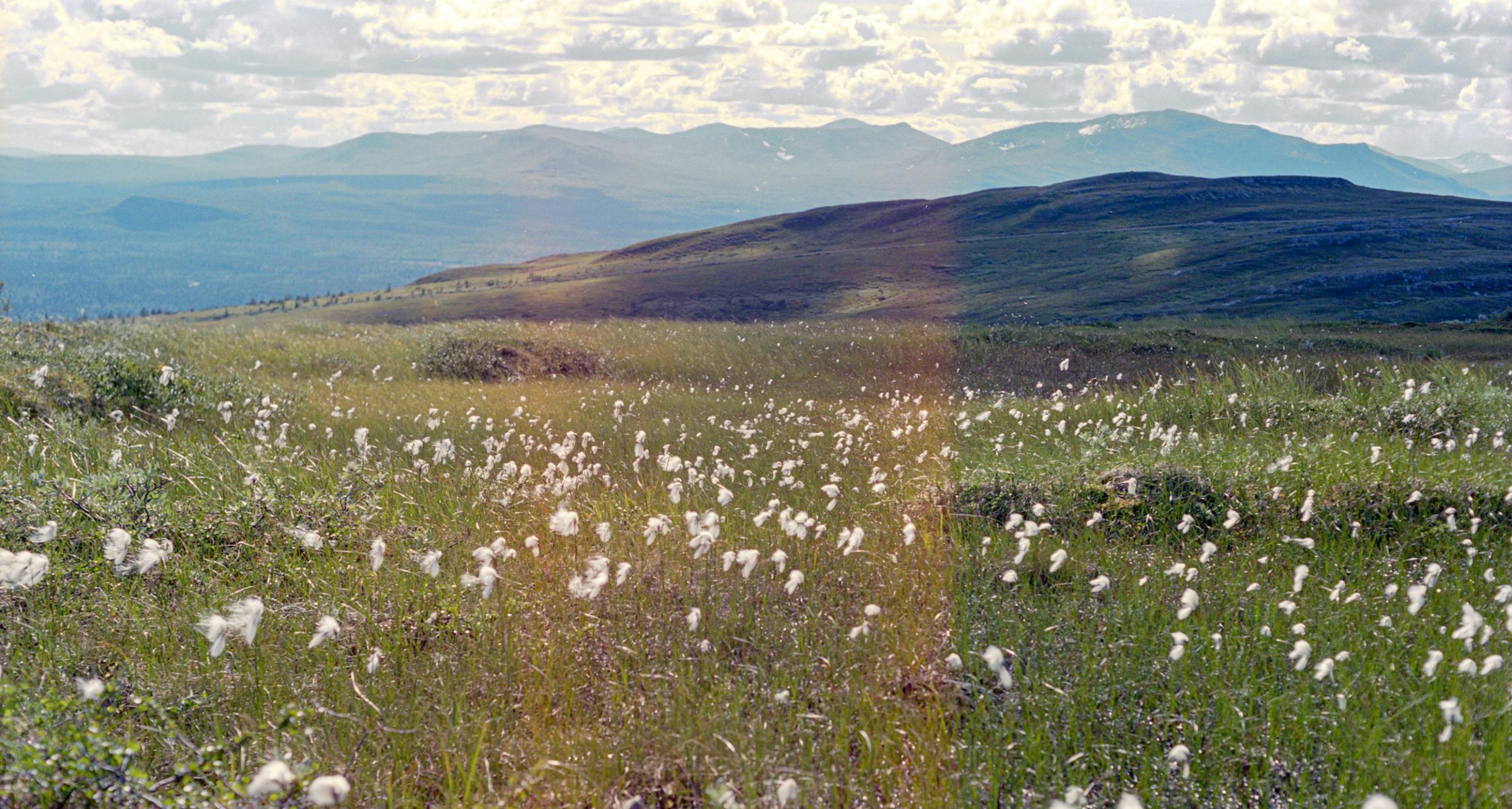
Kallfjäl [/kal/ fjel:] – The expansive beauty of the wild. You look up from your feet to take in the world spread out around you. A landscape cold-forged by long winters; a treeline so much lower than in other mountain ranges. Above, the vistas open out, tempting you towards the next peak. Long distance greens are replaced with subtler hues close by. Greys, oranges, lighter greens, shades of blue and white, all mixed up to create a landscape that flourishes during the short summers. The feel underfoot is firmer, the water-logged earth of lower elevations is replaced with rocks often embedded in rich, black dirt. But you seem less focused on the feel underfoot as your sense of sight takes over, piqued by the cooler air that swirls around you. An enjoyable freshness after the effort of the climb; as the chill makes its mark, it’s time to move on.
Skog [sko:g] – A thick blanket of small, densely-packed trees envelop you as you enter the forest. Ten feet in and your world becomes cut off from everything outside. Like a tunnel or a familiar duvet, you get small glimpses a little further on, but really nothing more than the immediate area. Your senses become hypervigilant to what’s close by; the forest acts like a sound booth insulating sounds from further afield. Rounding a corner, the sound of a river comes to you, the difference between not hearing it to hearing it is just a couple of strides. But what captures your senses most is the smell: a combination of sweet tree sap, dank earth and the lifegiving decay in the topsoil that is so present here. I find it synonymous with the Swedish forests; just at the thought of it I’m transported back. In the summer months, the silence is thick, in the winter it must be deafening. This is the most varied terrain underfoot. The thick network of trees, and roots spread across all trails, interspersed with rocks and mud, making for a feel that is both hard and soft at the same time. Rocks give a ping as you step on them, while roots have a deeper resonance, their sound reverberating deep into their underground networks. Each stride has a high-pitched swish as your legs brush through the vegetation. All of which heighten your ability to disappear into another world in the forest.

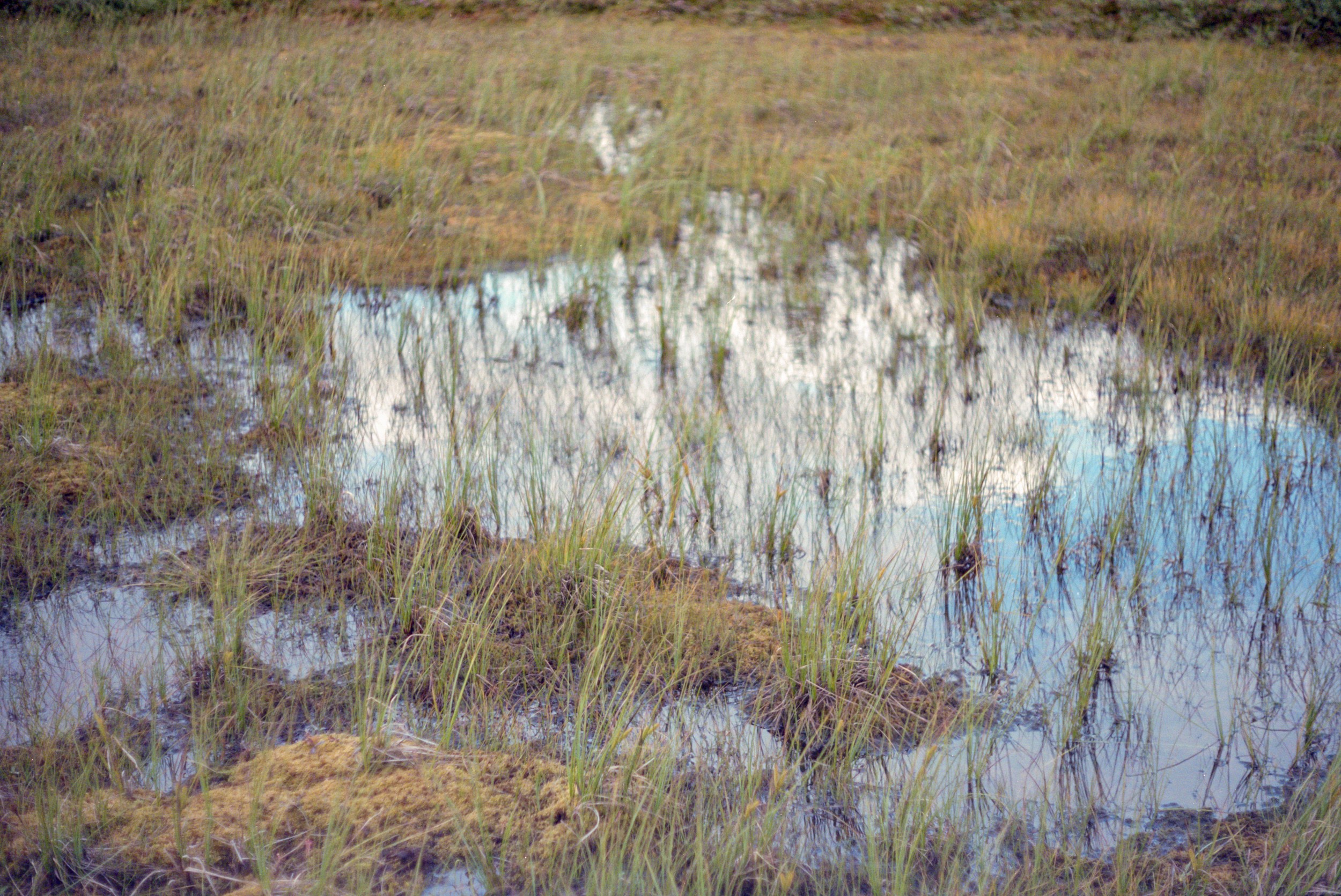
Myr [my:r] – Bogs are an unavoidable part of Swedish running. Often found in open areas, they are passable, but slowly, with effort, leaving the Swedes unfazed. Whether the trail takes a dry ridge between islands or has man-made help, the colour and expanse of these areas catches the attention. Small plants line the paths, interspersed with patches of water or mud. At first glance you see only green, but as you pass you see the same palette of warm hues found throughout the fjälls. The difference with the bogs is that they are broken with flecks of white from the ångsull, or cottongrass, and rich flashes of red and yellow from the hjortron berries. These fruits are not called the gold of the fjälls for nothing. Soft underfoot, route choice comes down to experience on reading how wet the carpet of greens and browns in front of you are. Sometimes sponge-like, other times just wet mud, the feedback loop of foot placement is less focused on angles and more on not going up to your knee. Each step elicits a different sound, a splosh, a squelch, or a deep thud when you spring off of the sponge-like parts of the ground, sounding as though below is somewhat hollow.
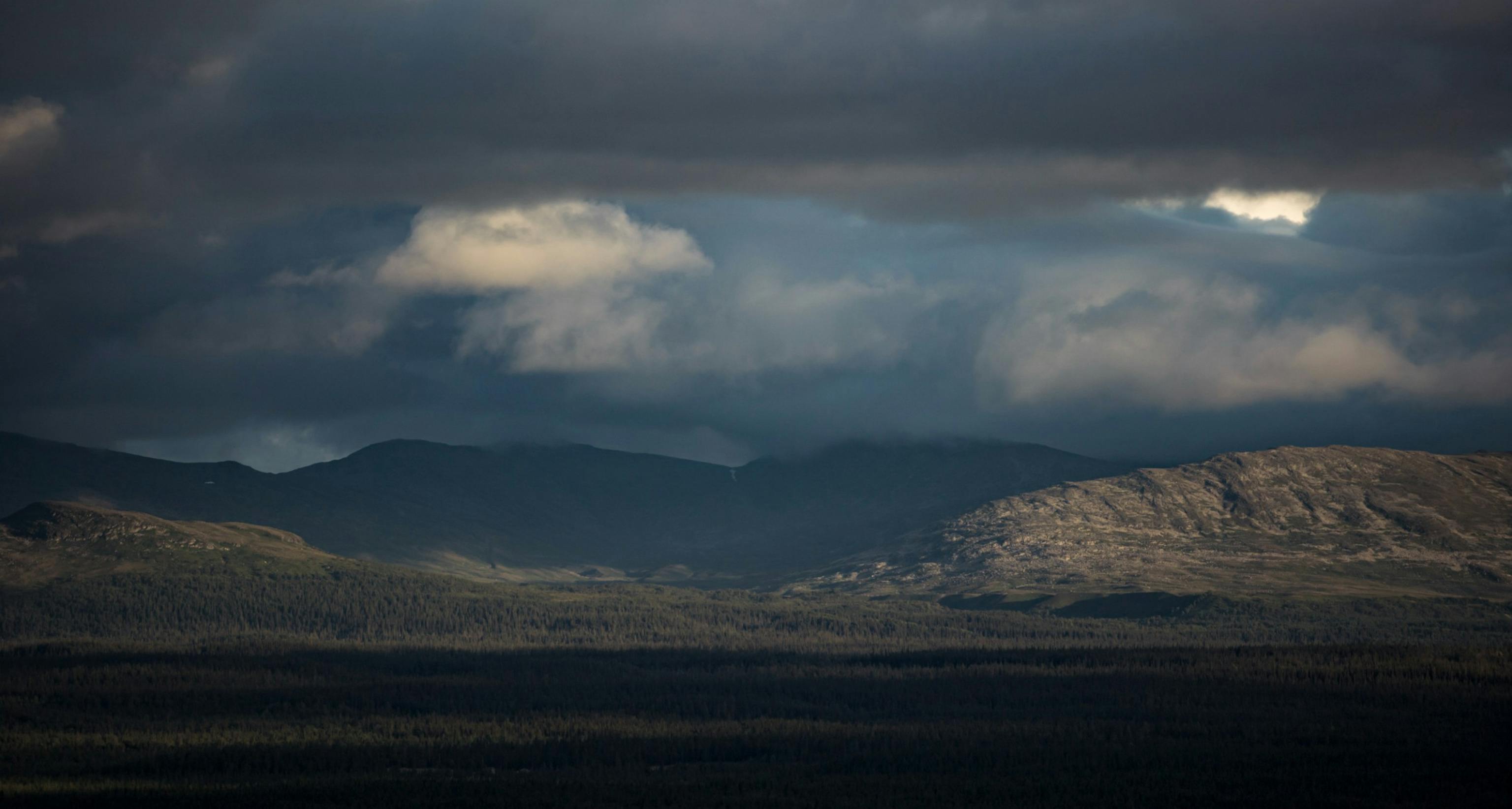
Spång [spåŋ:] – Man-made assistance for passing wet areas. The planks change the acoustic and ground feel of all runs. While the hollow ring that sounds under each foot strike allows you time to concentrate a bit more on the area around you, because you know that they should be, at least if fixed and not rotten, solid underfoot. You rediscover the spring and confidence to stride out. Running on these offers reprise from the constant turns, though their angles keep you thinking and enjoying the flow of moving through the terrain. One wide plank. Two or three narrow planks. Two wide planks. There is no rule here.
Väder [vạ̈:der] – Omnipresent on the fjälls. When you are this far north, the weather rules everything, and it can change in the blink of an eye. A location that lives up to the cliché of all seasons in a few hours. This interacts with the people making them seem hardier than others in Europe. If the weather is good, they make the most of it. If the weather is bad, they will be outside regardless. Sure, some preparation and awareness of the dangers of bad conditions are needed, but coping is more about mindset than anything else. This is not a battle with the elements, but a cohabitation, where weather is celebrated with the simple pleasure and joy of being able to be outside in it. How the weather interacts with the landscape is how you hear and see it. The ever-changing light affects your perception of the fjälls in the distance. Certain colours or shapes are highlighted as the clouds change the light. Listen for the sound of the rain in the forest, beating down through the thick canopy of leaves, the drops almost sounding bigger. The variety in sounds creates an embracing symphony, an acoustic representation of the world surrounding you, with each surface and angle playing its part. Underfoot conditions soon change. The waterlogged ground turns softer, pathways turn into small streams, your foot strike rings as it comes into contact first with the water, then the typical low thud as it hits the ground.
Fika [fị:ka] – A central ritual of Swedish life, the snack break is a post-run rite. Coffee and cake are always enjoyed. The coffee is strong and seemingly limitless; mouth-watering baked goods are offered in every café or home. From the sweet, stickiness of soft kardemummabullar to the richness of chokladbollar, these snacks are an excuse to think back on where you have just been, and to process the beauty of the landscape you’ve just passed through.
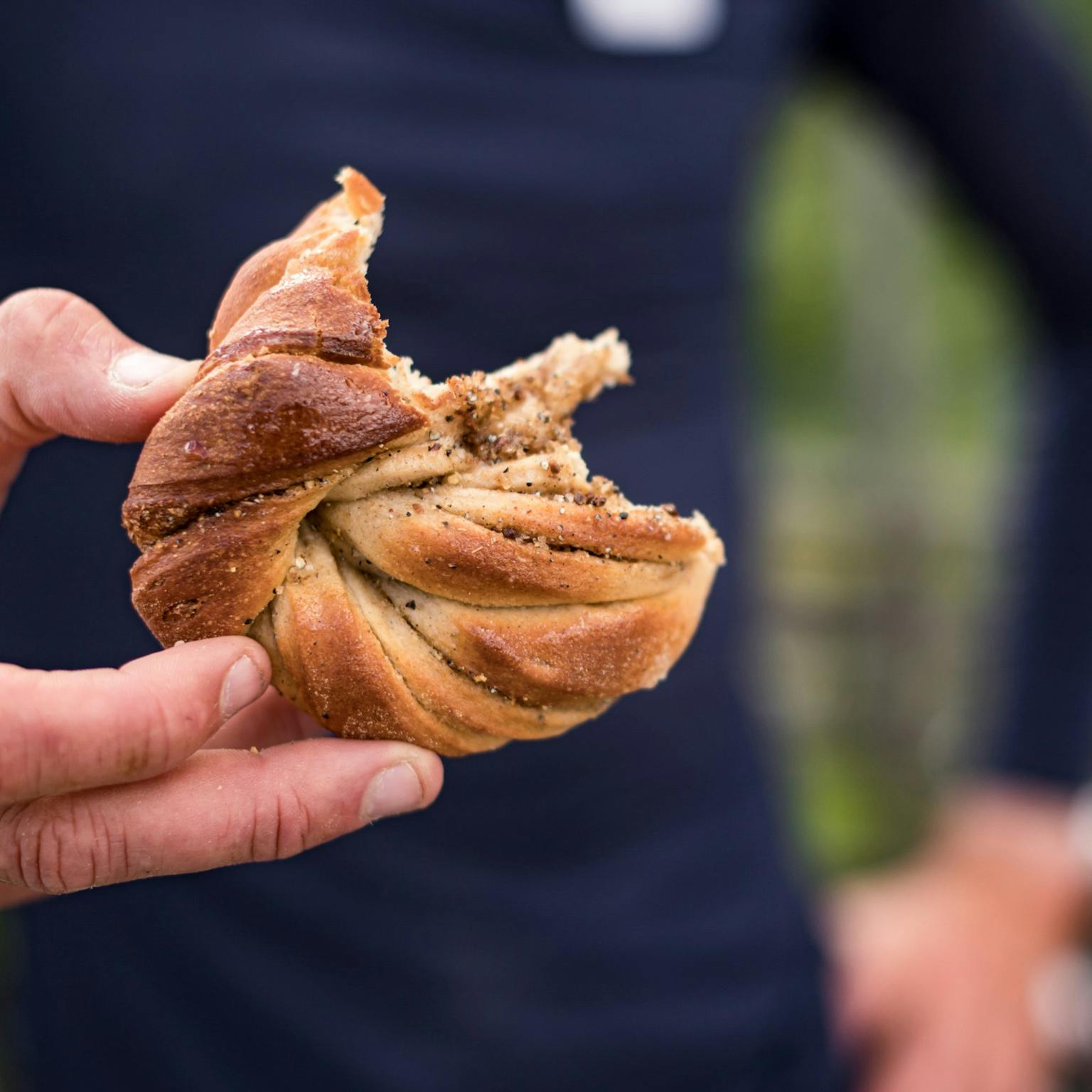

Friluftsliv [fri: luf:t li:v] – The love of the outdoors is something you feel and learn quickly in these mountains. Their inaccessibility forces those who want to enjoy them to leave their cars many miles away at remote trailheads. Swedes accept that the cost of entry is effort. From here, you move around the terrain by foot or on two wheels. Maybe this is only a summer thing, you think, but it’s part of all seasons. Snowmobile signs mark the landscape, but their range is limited, strictly delineated. But skiing? That’s like us. That’s the winter version of this. The creak when you raise your skinny ski to skate onwards. The crackle of the fine layer of snow under your skate skis. That’s the way to experience the fjälls when the snow is deep, the sounds are muffled, and the smells are gone, or changed to something colder, possibly sweeter. The call of the outdoors is an inevitable human trait. To fall in love with the outdoors takes time and effort and the right mindset; things the Swedes have in ample supply.
